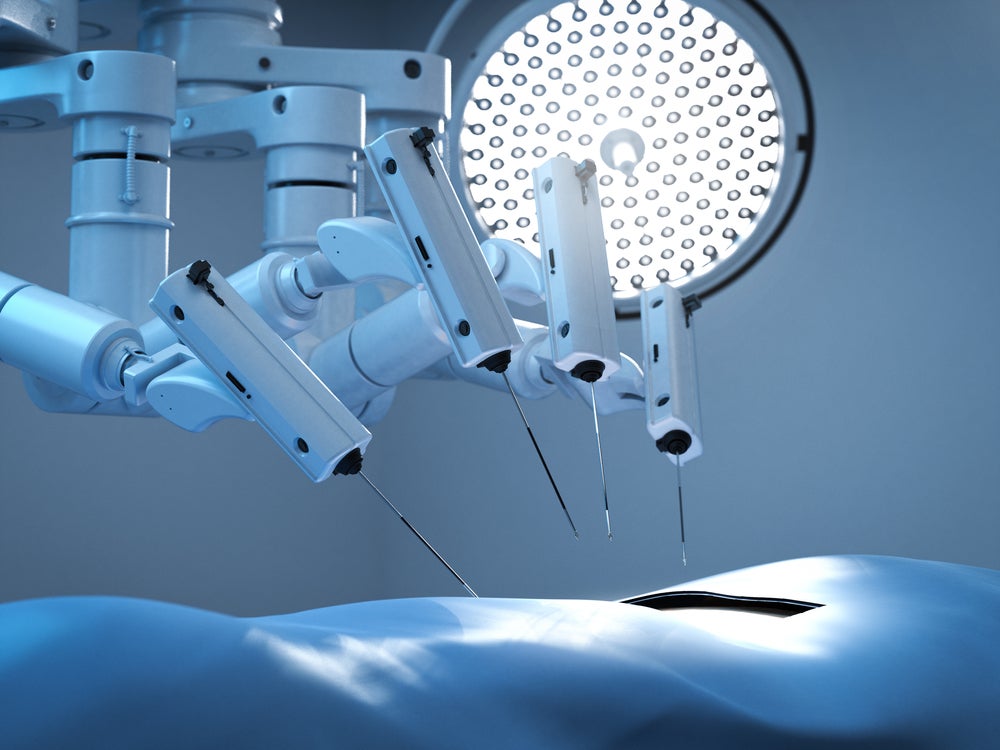The field of modern healthcare is undergoing a groundbreaking transformation with the rise of robotic surgery.
This innovative approach, powered by cutting-edge robotics, is revolutionising surgical precision in ways never seen before.
Surgeons now have access to advanced tools that enhance accuracy, efficiency, and patient outcomes like never before.
As we enter 2024, the impact of this technology on surgical practices worldwide is becoming increasingly evident.
Robotic surgery, once a distant dream, has become a reality thanks to significant advancements in robotics, AI, and medical imaging.
See Also:
By seamlessly blending human skill with robotic precision, surgeons can perform complex procedures with greater finesse and accuracy, leading to quicker recoveries and less invasive treatments for patients.
How well do you really know your competitors?
Access the most comprehensive Company Profiles on the market, powered by GlobalData. Save hours of research. Gain competitive edge.

Thank you!
Your download email will arrive shortly
Not ready to buy yet? Download a free sample
We are confident about the unique quality of our Company Profiles. However, we want you to make the most beneficial decision for your business, so we offer a free sample that you can download by submitting the below form
By GlobalDataThe benefits of robotic surgery are vast and significant.
With the help of HD 3D visualisation and microscale instruments, surgeons can navigate through intricate anatomical structures with unmatched precision, thereby minimising damage to surrounding tissues, reducing blood loss, and shortening hospital stays.
This not only improves patient outcomes but also preserves their quality of life, marking a pivotal moment in the history of healthcare.
According to leading data and analytics company GlobalData, in 2022, the surgical robotics market was worth $8.6bn and is projected to reach $10bn globally by the end of this year.
The market is expected to grow at a compound annual growth rate (CAGR) of 8% to reach $15.8bn by 2030, suggesting a steady growth trajectory.
Several factors play a role in the growth of the robotic surgery market such as the increasing demand from the growing older population seeking less invasive and more precise surgical options, the emphasis on value-based healthcare aiming to enhance surgical outcomes, and ongoing technological advancements driving the development of more efficient and less invasive robotic surgical systems.
Moreover, robotic surgery is levelling the playing field for accessing specialised medical treatment, breaking down geographical barriers to ensure that patients everywhere can access top-notch care.
Through remote telesurgery capabilities, experienced surgeons can now conduct operations from a distance, guiding and assisting their colleagues in regions where advanced medical facilities are scarce.
The impact of robotic surgery goes beyond individual surgeries, profoundly affecting healthcare systems worldwide.
By streamlining processes, optimising resource allocation, and improving surgical outcomes, robotic technology has the potential to ease the burden on healthcare infrastructure, lower expenses, and enhance overall patient well-being.
As we move forward into 2024 and beyond, the integration of robotic surgery into standard medical practices promises to revolutionise operating rooms.
With each successful procedure, we inch closer to a future where surgical interventions are safer, more accurate, and more accessible than ever imagined.









